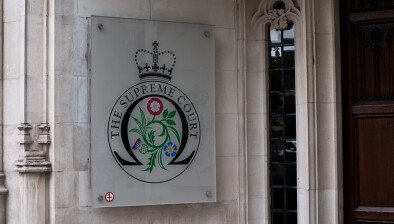NI High Court: Article 2 ECHR compliant investigation into Omagh bombing should take place

Northern Ireland’s High Court has directed that an investigation into the 1998 Omagh bombing that is compliant with Article 2 of the European Convention on Human Rights should be carried out following a judicial review.
The application for judicial review was brought in 2013 by Michael Gallagher, the father of a victim of the bombing, following a UK government statement ruling out further inquiries.
Mr Gallagher was instrumental in setting up the Omagh Support Self Help Group (the OSSHG), which has campaigned to have a public inquiry, preferably a cross-border one, to consider whether the bombing could have been prevented.
The OSSHG sought, and was granted, leave to judicially review the decision of the Secretary of State for Northern Ireland who, in a letter dated 12 September 2013, refused to hold a public inquiry (or any inquiry that complied with Article 2 of the European Convention on Human Rights) into whether there had been a failure to investigate if the Omagh bomb could have been prevented.
Mr Gallagher claimed there were arguable grounds that a breach of Article 2 of the ECHR had occurred (right to life) due to the failure of authorities to act in the months leading up to the bombing.
The Omagh bombing
On Saturday 15 August 1998, just after 3pm, a massive car bomb exploded in the small country town of Omagh, Co Tyrone. The car containing the bomb was parked 330 metres from the courthouse at the junction of High Street and Dublin Road.
The bomb, which is believed to have been constructed of Semtex explosive, fertiliser, and fuel oil, created blast temperatures in its immediate vicinity of over 1,000° centigrade. Structural damage occurred over an area of 125 metres and blast damage within a range of 500 metres.
Vehicle fragments of the car carrying the bomb were found 300 metres from the explosion. A total of 29 men, women and children and two unborn children were murdered as a consequence of explosion. Many others were grievously injured, both physically and mentally. It was a scene of utter carnage and devastation. One eye-witness described the scene: “There were bodies everywhere; it was like a war zone, a killing field.”
To date, no one has been tried and convicted for the attack, despite assurances made by leaders at the time that “no stone would be left unturned”. There was a civil proceeding decree for damages for £1.6 million in favour of 12 relatives of the bombing victims, against Michael McKevitt, Liam Campbell, Colm Murphy and Seamus Daly.
Article 2 duty
The applicant in this case alleged failures of the state, firstly to take reasonable steps to prevent the Omagh bombing, and secondly to conduct an Article 2 compliant investigation into that failure.
The court noted that there have been cases where the state has been found to be in breach of its positive duty under Article 2 to take positive steps to prevent loss of life. In Kilic v Turkey (2001) 33 EHRR 58, a journalist had been the subject of threats which resulted in him asking the authorities to put in place protective measures for his safety. Nothing was done, and it was found that no steps had been taken to prevent a “real and immediate risk” to the deceased’s life. Accordingly, there was a breach of Article 2.
The respondent argued that there are five essential elements that had to be in place for the state to be in a position to be held liable. These derive from the decision of the ECJ in Osman v United Kingdom (2000) 29 EHRR 245. In Osman, a teacher had become fixated on a pupil, eventually shooting and killing the pupil’s father, and seriously injuring the pupil. He was brought to the attention of the police several times over the course of months, and yet they never charged or arrested him. When he was eventually arrested, he asked the police: “Why didn’t you stop me before I did it, I gave you all the warning signs.”
The judge rejected the claim that all five elements of the Osman obligation had to be satisfied, and instead noted that “it is sufficient for an applicant to show that the authorities did not do all that could be reasonably expected of them to avoid a real and immediate risk to life of which they have or ought to have knowledge”.
In assessing these requirements, the judge found that there “is a plausible case on the OPEN evidence that the authorities knew the identities of many of those committed to and involved in this violent insurrection against the Northern Ireland state and arguably could have done more to disrupt their activities”.
Time barred?
As a final point, the court addressed the issue of whether the application for judicial review should be rejected under Order 53 Rule 4(1) of the Rules of the Court of Judicature (Northern Ireland) 1980.
The respondent argued that the bombing had occurred in 1998, and any application for judicial review should have been conducted within one year of the events complained of. The court rejected this approach on all fronts.
The judge noted that an application for judicial review had been lodged within three months of the 2013 letter indicating that no inquiry would be held. The judge further noted that even if the application was time barred, it would be equitable to extend the time limit under s.7(5), and that “if this court does have to extend time under section 7(5)(b), it does so without hesitation”.
Conclusion
Ultimately, the judge was satisfied that four of the 10 grounds complained of (2, 6, 7 and 9), when considered separately or together, gave rise to plausible arguments that there was a real prospect of preventing the Omagh bombing.
The judge stressed that it was important to be as “transparent as possible”, in noting that alongside the open judgment, there was an accompanying closed judgment, access to which would be severely restricted.
The court directed that an Article 2 compliant investigation should be carried out in Northern Ireland. The court went on to express its desire that a simultaneous investigation be carried out in the Republic of Ireland.
In response to the actual Article 2 investigation requirements, the judge provided a useful breakdown of the form that such an investigation should take, including that:
-
The investigation should be independent.
-
It should provide the means and the “will” and the opportunity to identify suspects and, if possible, call them to account.
-
The need for an effective investigation into the death goes well beyond facilitating prosecution. It follows that any decisions by the state not to investigate further or to prosecute, could not be determinative, even though they are relevant.
-
The investigation has to have the tools to establish a vital fact such as identifying those involved and “uncovering the truth of what had actually happened”. The investigation should be able to reach definitive conclusions.
-
The obligation to re-open the investigation would arise whenever there was a plausible or credible allegation or evidence which had the potential to undermine the conclusion of an earlier investigation or to allow an earlier inconclusive investigation to be pursued further.
-
Finally, an Article 2 compliant inquiry should provide the opportunity to recognise the lessons to be learned to avoid similar occurrences in the future.






